Ram loads upscale features under familiar look
By John Gilbert
It takes a great truck to be competitive among full-size pickup trucks, and whether you examine trucks anywhere from Ford, Chevrolet, Ram, Toyota, to GMC, every one is impressive in capability. It takes something extra to break through that brand loyalty and lure a truck buyer to switch allegiances.
Dodge apparently had that in mind when it revised the 2013 Ram — which is no longer a “Dodge Ram” but simply a “Ram” nowadays. If it’s going to take special features and conveniences to attract truck buyers, the new Ram is loaded, from its kneeling stance for easy entry and exit via its adjustable ride-height 4-wheel air-suspension, to its high-tech V6 complement to the cylinder-deactivating Hemi V8, both operating through a very slick rotary-knob-controlled 8-speed transmission, to its inner comfort and connectivity.
Aiming at class-leading hauling, towing and fuel economy, the Ram is also out bolster its forceful reputation by setting new standards for interior comfort and futuristic Uconnect connectivity — places where the competitors might have previously had an edge.
From the outside, the Ram doesn’t look all that different from the current 2012 model. But look closely and you see that the big, bold crosshairs grille is now bigger and bolder, growing 30 millimeters taller, above a new lower fascia. The top-of-the-line Laramie Longhorn has what Dodge calls a “heroic” bumper that is one-piece, real steel.
Appearance-wise, the Ram offers various looks, with grilles that range from black, to body-color, to silver, and on up to the Laramie Longhorn, which has a very busy silver mesh behind the crosshairs, and which seem to me to be too fancy for a work truck, no matter how plush and feature-filled the interior might be. The mesh looks like an escapee from Range Rover might have designed the look. However, part of the Ram’s improved aerodynamics — a 0.36 coefficient of drag — is that slats close off the grille when cooling is sufficient to not need extra air, which further reduces the aero drag.
Speaking of real steel, the Ram, which came out in its current form in 2009, has an entirely new frame made with an increased amount of high-strength steel, which can be made thinner and still stronger to improve stiffness and reduce weight. The truck body, bumpers and cross-members are also stronger and lighter.
Under the hood, the 5.7-liter Hemi returns, but its less-potent 3.7-liter V6 partner has been replaced by Chrysler’s new 3.6-liter Pentastar V6. The engine, which actually replaced seven V6 engines ranging from good to mediocre, is the true star of everything Chrysler, Dodge, and Jeep put on the street these days, and its move into the Ram pickup is more than just impressive. It, alone, might be a deal-breaker for truck-buyers who don’t need the extra heft of a V8.
The 3.6 Pentastar, with its dual overhead camshafts and variable valve-timing, is built at a 60-degree-angle V, of high-strength diecast aluminum, with cast iron bore liners for the cast aluminum pistons. Six-bolt main-bearing caps and forged connecting rods assure strength, which is good, because the 3.6 churns out so much more power that for the first time, the Ram V6 is available with 4-wheel drive and even the humungous crew cab. It has 305 horsepower at 6,400 RPMs, and 269 foot-pounds of torque, peaking at 4,175 but maintaining 90 percent of full torque from 1,800 to 6,400 RPMs. The V6 has a high compression ratio of 10.2-1, but it will still burn regular fuel.
The 3.6’s 305 horsepower represents an improvement of 45 (8 percent) over the 3.7 — which will continue in the base Tradesman models — and the 269 foot-pounds are a 14-percent increase in torque. While Rams used to only use V6es in 4X2 trucks, the new 3.6 V6 has fuel economy figures of 17 city and 25 highway, and still accelerates 0-60 in 7.5 seconds, and hauls trailers up to 6,500 pounds.
For heavy-duty work, the 5.7 Hemi has variable valve-timing and cylinder shutoff, which idles four of the eight cylinders when cruising between 1,000-3,000 RPMs. It also can be selected with stop-start, which shuts off the engine during stops at lights or during work duties, and restarts smoothly and effortlessly when the driver steps off the brake. That requires a high-endurance starter and a DC-DC converter to keep the accessories going during stoppages, and a heavy-duty battery.
A vital part of the new Ram’s success is the new 8-speed automatic transmission, which made its debut in the Chrysler 300 and the Dodge Charger automobiles, and moves with very little modification into the Ram. It will replace the 4-speed automatic in the current V6, and will be moving up to the V8, where it will join the very good and quite-new 6-speed, and improve the Hemi’s fuel economy by an anticipated 10 percent.
The new 8-speed was designed by Germany’s ZF — pronounced “Zed-F” — and is now built by Chrysler under its own licensing in Kokomo, Ind. Having eight speeds means an expanded range of ratios, from 4.74 in first gear to 0.67 in eighth, where anything under 1.00 is overdrive. The wider ratios are an obvious advantage to both acceleration and high-speed cruising, and having more steps between the eight gears lessens the force of each shift for an improvement in shift quality. The inner sophistication of the transmission is best described by the fact it has over 40 shift maps, each of which are determined by computer, which reads engine speed, torque, and other driving demands, then selects the best ratio.
Shifting the transmission is done by a very Jaguar-like rotating switch. In every Jaguar, a small puck-like cylinder rises from the console, and you engage a gear, or park, by turning the thing. ln the Ram, the same sort of puck is located fixed on the center stack, in easy reach of the driver, and I found it more intuitive than the console switch on the Jag.
That’s a small part of the interior refinements in the Ram, which has redesigned cupholders, upgraded interior fabrics, with all media ports in the console’s center stack area. The Longhorn has real wood trim, of some sort of European open-pore wood, but the same guy who overdid the grille also might have been responsible for adding glare-attracting bright silver trim to the center-stack surround.
An optional display screen offers a full-color 7-inch view when you back up, and it allows viewing of trailer hookups while also including all pertinent trailer data.
The 3.6 V6 Ram is 130 pounds lighter than its predecessor, and the Pentastar V6 and the new 8-speed transmission account for 76 of those pounds. The 8-speed with the Hemi V8 is 30 pounds lighter than the 2012 Hemi with the 6-speed. Electric power steering operates the mechanical rack-and-pinion steering, and eliminates the need for a power-steering pump.
Price structure starts with the Tradesman 4X2 at $23,585; SLT models range from $28,345-$36,835; Sport goes from $33,030-$42,500; and the Laramie from $38,710-$48,515. Options, of course, including the air suspension, can boost all those prices. Production of the 2013 Ram started in August, and it will come out for the last quarter of 2012, a year when the Ram already is 23 percent ahead of 2011, year-to-date.
When the current Ram came out in 2009 was the addition of Ramboxes, the cleverly designed narrow little storage bins located in both sides of the bed walls, with hinged covers running along the top edge. It has been a popular feature, and it is enhanced on the new truck by being lockable at one touch, along with the tailgate, whenever the driver hits the key fob to lock the doors.
One of the 2013’s big features is the addition of air suspension, which allows adjustable ride height, something that is common among off-roading SUVs, but is unprecedented in pickups, which spend a lot of their working lives clumping over boulders and uneven land on ranches, farms, and on hunting expeditions.
The Ram can be adjusted to four heights, starting with an off-road setting that raises clearance by 2 inches; a lesser off-road setting increases ride height by a half-inch. The normal setting is for normal highway driving. Then there is the entry-exit setting, which causes the Ram to drop down 2 inches in ride height for easier climbing in or hopping out. A fifth mode that can’t be set is for aerodynamics, automatically lowering the Ram at 60 miles per hour to reduce aerodynamic drag.
As a final touch to show how far truck folks have come in recent years, the “next generation” Uconnect Access makes its debut, turning the Ram 1500 into a Wi-Fi hotspot. Voice-recognition can be activated, or coordinating with steering wheel controls, touchscreens and traditional controls, all of which offer occupants a variety of ways to access and operate the numerous gizmos. Access allows alternative ways to summon up and use all the various applications, including using the web, in case the optional 8.4-inch touchscreen seems inadequate.
Comments
One Comment on Ram loads upscale features under familiar look
-
MelonyZKelln on
Tue, 4th Oct 2016 4:40 pm
I read through this post completely concerning the
comparison of newest and previous technologies, it’s remarkable article.
My blog post :: MelonyZKelln
Tell me what you're thinking...
and oh, if you want a pic to show with your comment, go get a gravatar!


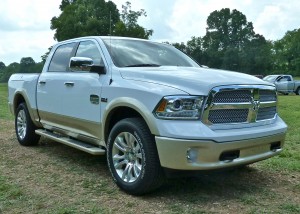
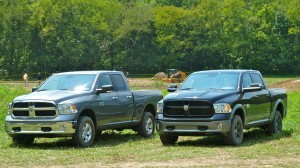
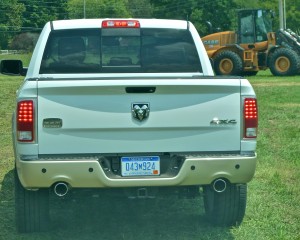
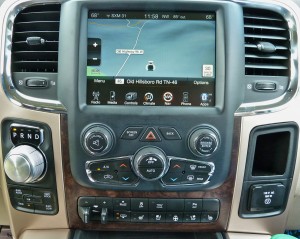
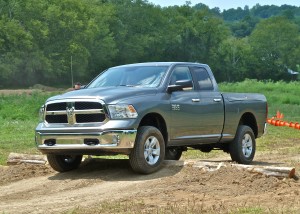
 John Gilbert is a lifetime Minnesotan and career journalist, specializing in cars and sports during and since spending 30 years at the Minneapolis Tribune, now the Star Tribune. More recently, he has continued translating the high-tech world of autos and sharing his passionate insights as a freelance writer/photographer/broadcaster. A member of the prestigious North American Car and Truck of the Year jury since 1993. John can be heard Monday-Friday from 9-11am on 610 KDAL(www.kdal610.com) on the "John Gilbert Show," and writes a column in the Duluth Reader.
John Gilbert is a lifetime Minnesotan and career journalist, specializing in cars and sports during and since spending 30 years at the Minneapolis Tribune, now the Star Tribune. More recently, he has continued translating the high-tech world of autos and sharing his passionate insights as a freelance writer/photographer/broadcaster. A member of the prestigious North American Car and Truck of the Year jury since 1993. John can be heard Monday-Friday from 9-11am on 610 KDAL(www.kdal610.com) on the "John Gilbert Show," and writes a column in the Duluth Reader.